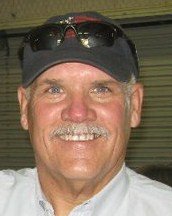Welcome! I hope this August finds you happy and safe! Today I am going to broach the subject of the most dangerous and deadly part of our industry… Driving. I fully understand that the 40 hours of documented training that we received at the mature age of 16 to 18 years of age fully qualifies us to drive on today’s highways. Wait, sarcasm does not help the situation.
The other day I was driving on Hwy 285, Hwy 128, and Hwy 302, as well as on some other backroads I don’t recall. It scared me and I’m not scared of anything! As I was driving at a speed lower than the speed limit due to heavy traffic, I noticed the vehicles in front of me were pulling off to the shoulder to avoid an oncoming truck. The oncoming truck apparently had to be somewhere faster than the regular flow in front of him. As I was getting ready to take the shoulder to the right, I got a glimpse of a welding truck passing on the right completely off the pavement. It was at that point I proceeded with a double handed white-knuckled death grip on the steering wheel while going top speed at 50 mph. I certainly felt vulnerable. Later in the day, I was able to stop at a rest stop and say a little prayer. I briefly mentioned my experience on social media and one of my friends referred to the highways that I took as the “Thunderdome,” making reference of course to the Mad Max movie. The description was not far off.
I’ve been driving since 1968. I have taken numerous popular safety driving courses and taught most of them. Nothing prepared me for the aforementioned experience. Since July 1st through July 18th, there have been 24 reported fatalities on these roads. By the time you are reading this, unfortunately, the total will probably be higher.
Law enforcement was scarce. Distracted driving was obvious and prevalent. Traffic was insanely stacked up. The roads were inadequate. Alternate routes were not possible unless you re-routed through Utah, lol.
Instead of complaining about the circumstances, one can adopt any of numerous proactive solutions, such as: 1.increased driver training, 2. journey management, 3. the monitoring of driving, looking for speeding, harsh braking, and harsh turns. There are vehicle monitoring systems that are used to track, assess, and report on vehicle activity that reflects the driver’s behavior, as to whether good or bad.
With all the technology available, most companies spend approximately eight hours classroom for driver training and maybe 1-2 hours of ride-along observations. That is not much training in proportion to the amount of driving being done by the average oilfield driver. Most drivers are not trained in self recognition of fatigue, stress, pressure, much less on hazards of road conditions, on weather conditions, and on proper vehicle maintenance. When a worker spends 60 to 80 hours on the job, there are other factors aside from fatigue that creep in, such as family issues and proper diet. There is nothing like picking up a couple of gut grenades (fried burritos) at 4:00 in the morning for a healthy diet.
Technology can definitely assist on driving habits. Technology can be costly, however, it can be costly if not utilized. I am not aware of any fail safe systems that can prevent all accidents. If we as an industry can show due diligence on our training, as well as on internal enforcement and continual retesting, there will less cost in the long run.
Hiring practices and legitimate background checks are also key to a good safety program. However, due to the shortage of drivers and quality help, it appears the “talent pool” is shallow and low in chlorine. Money spent on a quality Human Resources (HR) department will pay dividends.
Which leads me to welcoming Michele Harmon, a new contributing HR columnist for PBOG magazine. I look forward to what she will bring to the table for tips in HR that will help us to hire, train, and keep quality personnel. Welcome Michele!
As in any other line of business, it is critical to stay up on the latest and the greatest; safety is no exception. Rules and regulations are constantly changing. Methods of presentation and delivery have a short shelf life.
One of the best ways I’ve found to stay up to date is through an organization called ASSP (American Society of Safety Professionals), previously called American Society of Safety Engineers (ASSE). This organization is excellent for networking with fellow safety professionals to stay in tune with various aspects. There are also scholarships available for individuals interested in pursuing a career in Health, Safety, and Environment.
If you are interested, please call Ketha Molina, current President of the Permian Basin Chapter, at 432.209.9482 for more information. We meet once a month and you do not have to be a safety professional to attend. We have guest speakers each month regarding different aspects of HSE, primarily in oil and gas but not limited to oil and gas. We have had speakers from the Occupational Safety and Health Administration (OSHA) for insight and trends, as well as speakers from the Texas Department of Transportation (TxDOT), and we have covered situational awareness and workplace violence as well. Please come join us.
Thank you for the positive feedback. I look forward to hearing from you. Stay safe.
___________________________________________
By Dusty Roach










